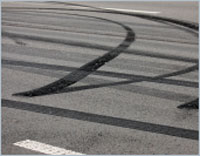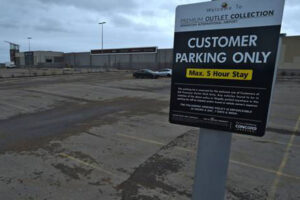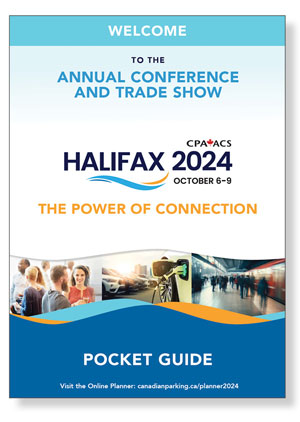By Colby Cosh
A few weeks ago, Edmonton’s council voted to remove all minimum parking requirements from real-estate developments in the city, which becomes the first in Canada to do this. Builders will, once the relevant bylaws are squared away, be free to use their own judgment in allocating parking to housing units and offices. If they choose, they can have none of it.
This was possible partly because Edmonton’s old parking requirements were absurdly grandiose. (Among its other distinctions, the city, thanks to its flagship shopping mall, is home to the world’s largest parking lot.) But it is also a triumph, in a most unexpected place, for a little band of intellectual guerrillas sometimes called the Shoupistas. They are the followers of Donald Shoup, an 81-year-old UCLA economist and urban planner who is considered the Sir Isaac Newton of parking.
Parking — boring topic, ain’t it? Shoup latched onto it as a young-ish man because he was a follower of Henry George (1839-1897), the intriguing “single tax” economic theorist of the 19th century. George favoured a tax on the unimproved value of land parcels as a way of socializing pure rent (the value earned from occupying a mere location) and encouraging development. It is a concept that many economists still like, although it is potentially difficult to apply at scale. The widely used concept of tax increment financing is one example of Georgism in practice.
Shoup started out trying to fit parking spaces into the Georgist picture, but the boring topic was so underexamined that he found himself having to build a general theory of parking. He quantified the relationship between parking and traffic, finding that people “cruising” for parking spots were more destructive than anyone had imagined, and he inspired waves of research into the hidden…
By Bob Matich
Parking structures play an important role in society and are often the first touchpoint one has with a building so, ensuring customers have a favorable experience while interacting with a parking garage becomes important in protecting revenue generated by these assets. It follows that parking structures need to be effectively maintained. By the nature of where parking garages are located and how they are used, they are subjected to the effects of harsh environmental exposure, road chemicals and daily use. One of the most critical challenges facing parking structures today is moisture penetration. Unprotected structures suffer from water-induced damage, including deterioration and corrosion caused by alkalis, salts, and acids.
The key to preventative success against detriments outlined above is utilizing a system of products designed to work together. Liquid-applied high-performance traffic membranes are a major part of such systems as they offer long-lasting protection against the most damaging conditions. While these traffic coatings are exceptionally durable to traffic, there are circumstances which can exceed the limits of even the highest performance system. This article will outline an overview of situations that should be limited or avoided, as well as periodic maintenance procedures to follow. General topics include snow removal, high heat exposure, cleanup, repair for damaged areas, repair of high wear and recoating for aesthetic purposes.

Prevention
Traffic membranes can tolerate a limited amount of extreme heat exposure. Exceeding these heat tolerances may damage or decrease the life of the system. High heat exposure may be caused by a variety of occurrences on a parking structure, including friction caused by spinning tires, non-extinguished cigarettes, or aggressive cleaning equipment. To limit exposure to high heat, it is recommended that signage be posted to limit speed, reminders to…
By Pam Strong, Lake Simcoe Region Conservation Authority
Canadian winters present many challenges for parking lot and property managers across the country, with their mix of snow, sleet, and freezing rain. The use of snowplows and the application of sand is one of the only options for colder climate areas in Canada and will generally provide the traction needed for safe conditions. In more temperate areas, however, the application of a de-icing agent is often required alongside plowing. These are typically some of the country’s more highly populated areas, making proper maintenance crucial due to the higher traffic volumes. Winter maintenance is a challenge in these areas, where temperatures often hover around the freezing mark and freeze-thaw cycles are common. However, it is in these conditions where the use of road salt (i.e. sodium chloride) has become the common, practice. As its use has become increasingly widespread over the past several years, with approximately seven million tonnes applied annually in Canada, we have also come to realize that its use comes with several significant environmental and financial consequences.
Road salt has been in use as a de-icer since the late 1940s, and it has become the most used tool in the winter maintenance toolbox. It is relatively inexpensive, generally easy to access, easy to store and use, and it is highly effective at melting snow and ice, at temperatures down to -9° Celsius. These characteristics have led to its widespread use for road maintenance, and for private residences and parking lots of all types. In 2004, Environment Canada introduced a Code of Practice for the Environmental Management of Road Salts, for use by road maintenance agencies. Since that time, these agencies have been making efforts to refine their winter maintenance practices and reduce the amount of salt…
By Kristen Locke, CAPP
Parking technology has transformed significantly in recent years. In the parking and mobility industry, there has been a surge of new enhancements to the traditional options for technology including frictionless hardware, efficient enforcement systems, smart sensors and wayfinding, and mobile parking platforms. Leaders throughout the industry now have the opportunity to innovate with their systems more than ever, and they also have the option to customize their operation with the right solution to fit their unique operational needs.
While this explosion of new technologies can come with many exciting opportunities for the municipalities, universities, private operators, and others looking to start managing increasing parking demand, adopting new technologies also comes with a lot of pressure. Not every solution is right for every organization. How does one choose between all of the options available? And what solution (or combination thereof) will provide the best experience for your users, while meeting all of your organization’s goals?
Each organization faces different challenges, serves a unique audience, and has different long-term goals. It is important to refocus and have a comprehensive understanding of what your organization is looking to accomplish before ultimately selecting the new technology that is right for you.
I’m in the market to start using a new technology solution. What do I need to know?
Prior to purchasing and implementing a new parking and mobility technology or platform for your organization, it is critical to ask the right questions. These questions should address your current needs, as well as future goals.
Some of these questions include:
• What are the biggest challenges our organization faces today and what solution will best help to alleviate them?
• What is most important to our users?







